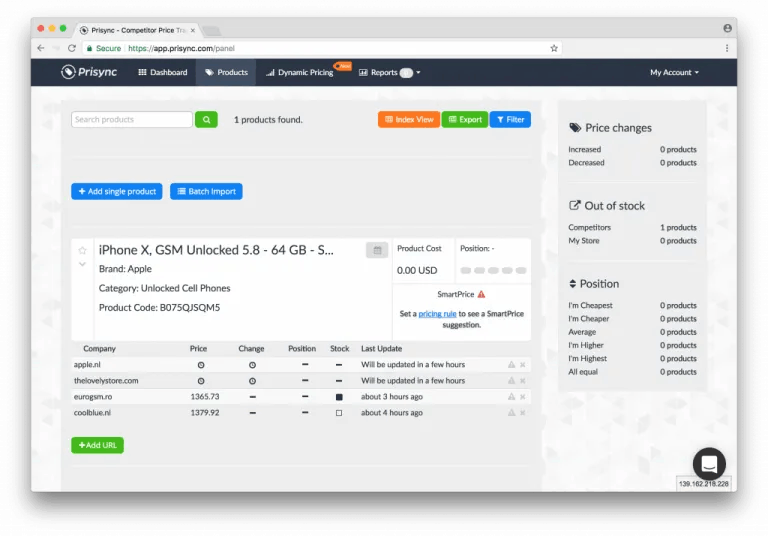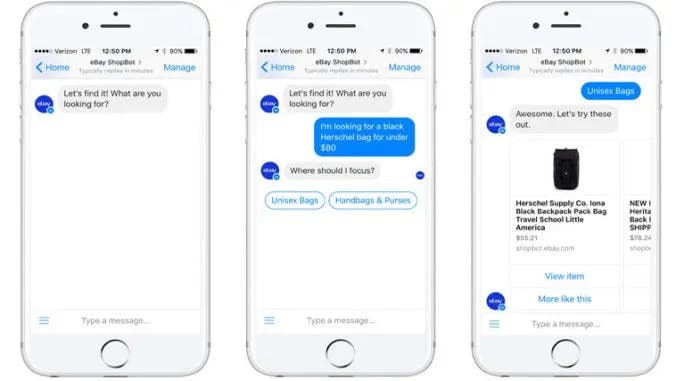1. Make things personal
The great advantage of machine learning is that it allows your site to treat people as individuals. In gathering information about visitors, the site can become more intuitive.
In one sense, this refers to segmentation. An online clothes store can use a person’s browsing history on the site to determine that she seems to be female, in her thirties, possibly with a thing for oversized earrings. And so, she can automatically be directed to the store’s new range of sparkling, dangly wonders!
In another sense, machine learning goes beyond mere segments. Interactive assistants can ask visitors how they’d like to be helped, while customizable online quizzes can help you find out highly specific information about your users.
All this can allow your site to act as a virtual personal shopper, asking customers to elaborate on what they’re looking for and finding the exact product to match. It’s a winning formula that many leading online retailers have adopted, such as electronics experts Monoprice.
2. Make searches smarter
Once upon a time, ecommerce was all about keywords. For example, a potential customer would visit the site of their chosen DIY store, search for “tool kit,” and see all the related products.
Keywords still matter, but machine learning is ramping up the likelihood of turning that search into a sale. It allows you to present search results tailored to the current visitor’s purchase history or personal preferences.
For that “tool kit” search, this could mean that the site can prioritize search results that correspond to data about this customer’s preferred brands or spending limits. Operating in real-time, it can also prioritize the products currently in stock or highest rated.
On top of that, machine learning can consider that not everybody will use the same search terms! One man’s tool kit is another man’s workbox, and AI can understand such variation.
For example, the image below shows an intelligent search by retail giant HSN.. The search term “tote” brings up results for a variety of related bag types, regardless of whether their description contains the word “tote”

Overall, a smart search hugely increases the chances that visitors to your site will find exactly what they need, and that sale is just one click away.
3. Pinpoint those recommendations
Of course, you don’t need to wait for a user to search before you present them with products.
From Netflix to that psychic YouTube bot, people have come to expect personalized recommendations from websites.
And those suggestions aren’t just something that people mull over. For example, Amazon claims that its targeted recommendations lead to a whopping 35% of its total sales!
For your existing customers, machine learning can analyze their habits on the site to recommend the right product. This could be an item the customer was browsing a month or two ago or a new item that’s proven popular among similar customers.
But what about potential customers? If a new visitor has browsed your site, submitted their details, and left without purchasing, can recommendations even be an option? With machine learning, yes, they can!
AI can take what you know about this new visitor and compare it to similar shopper profiles. In comparable cases, what route has led to a sale? A targeted recommendation on Instagram? An email offering a discount on an item from their abandoned cart?
On homepages alone, personalized promotions have been shown to influence a sale for up to 85% of customers!

Example of a personalized recommendation
4. Make prices smarter
Speaking of Amazon, did you know that the mega-retailer changes the prices every ten minutes?
Let’s remember that price fluctuation is perfectly normal. As retailers, we constantly decide what price will attract customers while ensuring a fair profit margin.
Machine learning makes a difference: these fluctuations can happen minute-by-minute and case-by-case.
When browsing a product on Amazon, the site processes countless variables to set a price that makes this particular user most likely to buy this specific product. These variables include information about the shopper and factors like competitors’ prices or the product’s current popularity.
The good news is that your company doesn’t need to be a global juggernaut to use innovative pricing. Great online pricing tools are available for all budgets.
It’s also worth mentioning that this practice won’t require you to slash all your prices. Instead, it’s simply a case of allowing costs to be automatically tweaked so that you can make that sale.

Example of dashboard for Prisync online pricing software
5. Don’t fear the chatbot!

Chatbots get a bad name. They can make us think of a customer typing a question and being met with an abrupt, “Computer says no.” They can seem cold, corporate, and everything an eCommerce store doesn’t want to be!
But here’s the thing for the vast majority of businesses, chatbots are the only affordable way to provide 24-hour support. Moreover, technology has advanced to the point where they can offer excellent service.
These factors combined lead to a prediction that, very soon, just 15% of customer interactions will be dealt with by human agents.
Machine learning allows chatbots to help your customers in two ways:
- The chatbot can be programmed with information about your business and the FAQs you receive. The more it works, the more it learns. As time goes by, not only do its automatic responses get more accurate, but it can even start to let customers know about new products, discounts, etc.
- The chatbot can also factor in the customer’s existing data to allow responses that are truly tailored to the individual. It can “remember” the customer from previous chats, refer to previous orders, and so on.
How to get the perfect chatbot for you? As ever, a whole host of affordable options exist, allowing your site to offer a level of service that will retain even the most demanding customers.
Conclusion:
For many businesses, 2020 is a year of sink or swim. So it’s more important than ever to focus energies—and budgets—on projects that will pay off.
The silver lining is that technological advances, like machine learning, finally allow retailers of all sizes to compete with the Amazons and the eBays of this world. Moreover, affordably, they will enable you to personalize the experience for visitors to your site.
And it’s that personal touch that will keep your shoppers clicking, buying, and coming back for more. Schedule a free demo with us.






